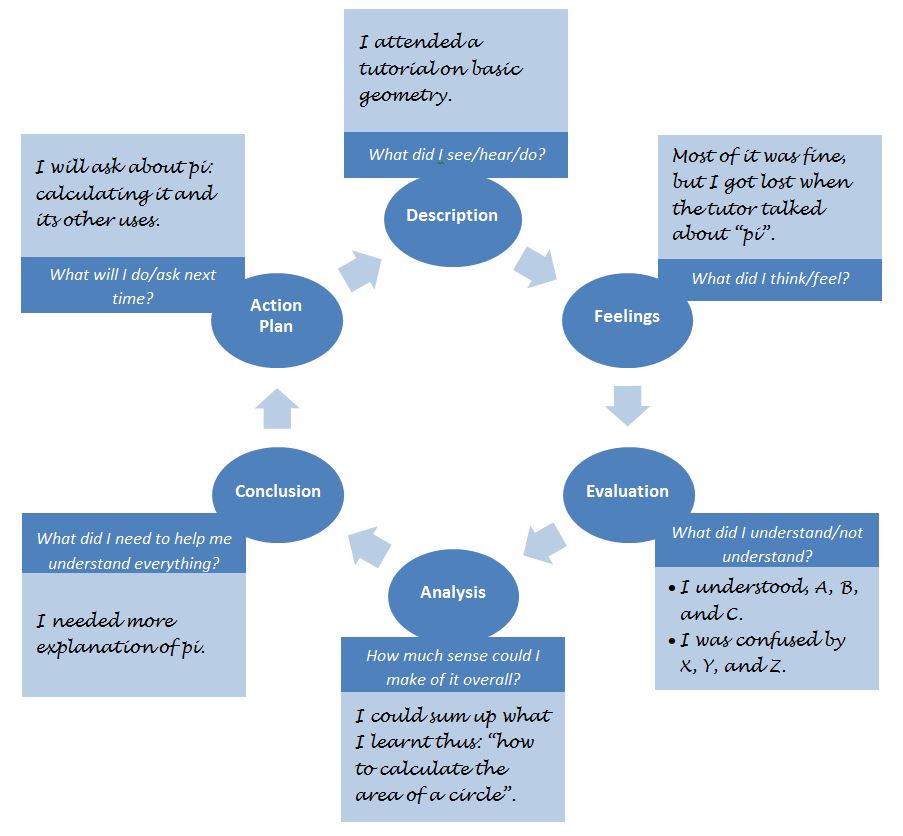Objectivizing Reflective Practice: A Qualitative Method (2)
- The teacher then obtains student feedback regarding his performance. Ideally, multiple students provide feedback.
Time and complexity constraints necessitate practical limitations, hence, the feedback elicited will be structured and pointed. To facilitate straightforward comparison and contrast, the student-produced feedback will follow the format of the teacher’s chosen reflective cycle model as closely as is practically sensible. There will, therefore, be modifications to wording, but the students’ feedback will be in format roughly parallel to the teacher’s.

There is also a potentially powerful secondary benefit to this approach: providing the teacher with this information may reinforce the learning of the feedback provider, i.e. the student could also reap the benefits of reflective practice by completing this reflective writing exercise. This will be an avenue for future research is to explore.
